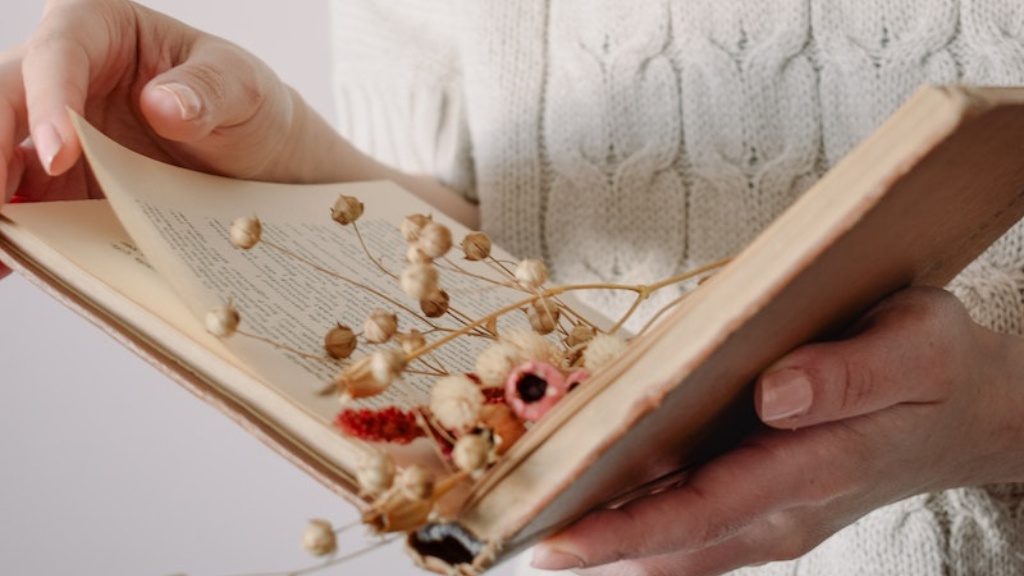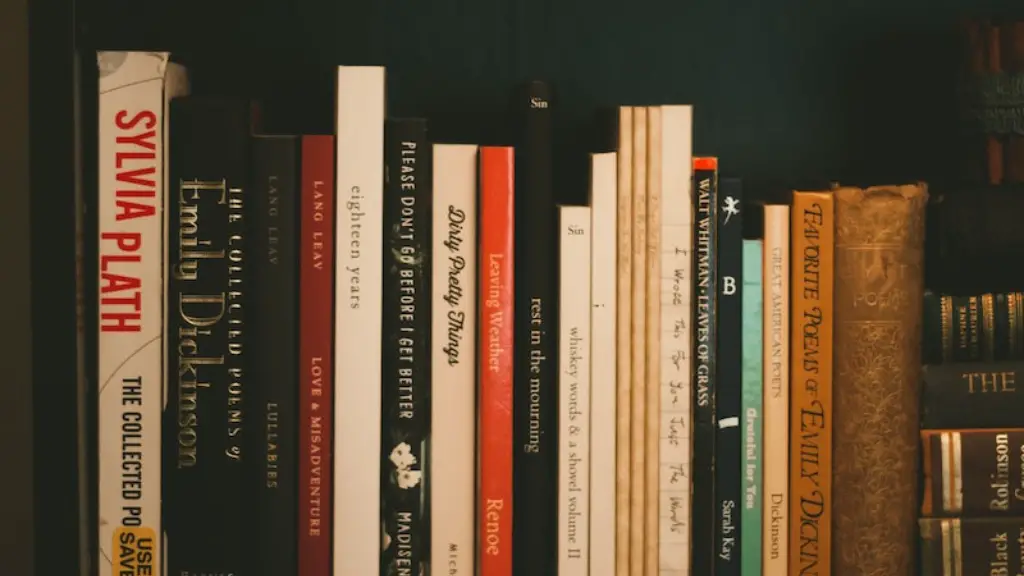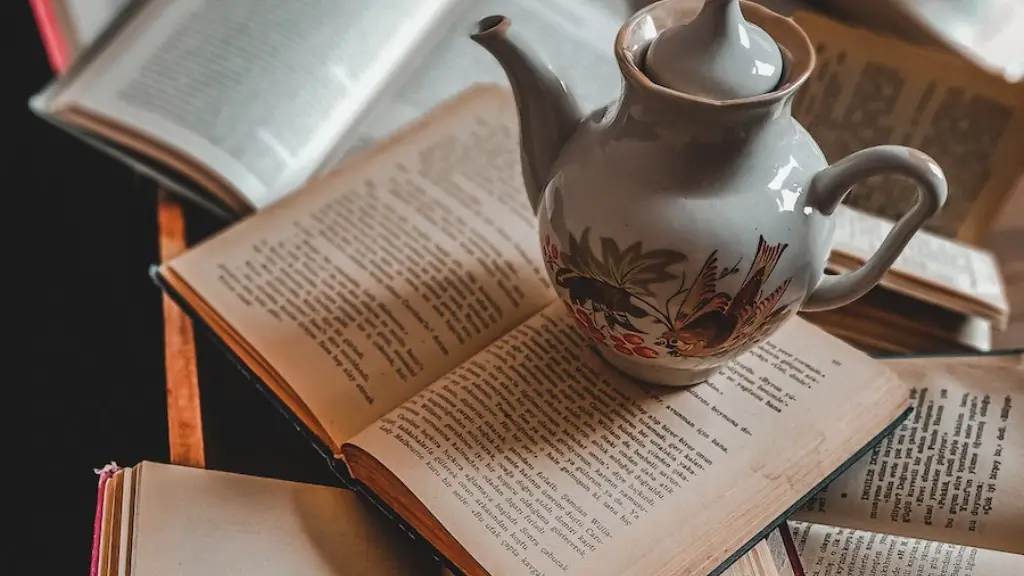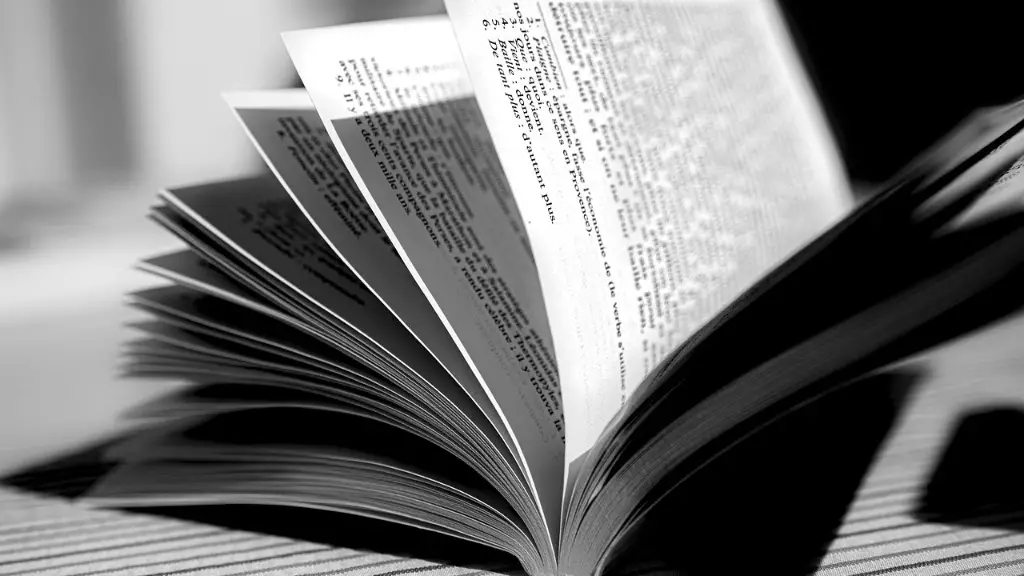Romantic poetry is a style of poetry that flourished in the 19th century and continues to be read today. It celebrates the power of the imagination and explores the connections between the physical and spiritual worlds. It celebrates the beauty of nature and emphasizes the individual’s emotional response to the world.Romantic poets sought to express themselves in vivid, passionate terms and believed that feelings, rather than reasoning, should be the basis of all thought. They explored the depth of the human experience and the interaction between nature and the individual. Romantic poets often wrote in the same poetic form, using a combination of narrative and lyric to express their ideas.
The Romantic poets were inspired by the artistic movements of their time, like the Pre-Raphaelites, which sought to recapture the beauty and spiritual power of nature in art and literature. They also drew on the Gothic and supernatural elements of folk tales and myths. Romantic poets sought to convey emotion, rather than simply record facts. They were fascinated by the power of the imagination and its ability to enable us to escape from reality and explore the spiritual world or create a new one.
Themes common to Romantic poetry include nature’s beauty, love, death and loss, and the power of the imagination. Nature was a frequent source of inspiration and was often seen as a metaphor for the spiritual realm, a place of harmony and peace. Love and the joy it can bring was also a popular theme, as well as the sadness caused by a lost love, death or any other kind of loss. Romantic poets explored the power of the imagination to create alternate realities and transcend the physical world.
The language of Romantic poetry is usually evocative and vivid, as poets sought to use words to evoke powerful emotions. They focused on sensory details, and their descriptions were often exaggerated or passionate. They also used multiple images or symbols to convey the same theme. Romantic poets also employed the technique of imagery, using vivid and concrete images to create an emotional experience, rather than an intellectual one.
The poets of the Romantic period affirmed the human spirit and its resilience in the face of a chaotic and changing world. They embraced the idea of change and encouraged people to challenge the conventions of their time. Romantic poetry invites us to imagine a world beyond our own, to explore the depths of human emotion, and to rediscover our spiritual connection with nature. It remains beloved today for its powerful expression of emotion and its unique perspective on the world.
Focus on Nature
Romantic poetry has a special focus on nature, as an inexhaustible source of inspiration and idea. Romantic poets used vivid and detailed descriptions of the natural world and its effects on human emotions. The power of nature to evoke awe and a feeling of unity with the universe is an essential element of Romantic poetry. Nature is seen as a source of beauty and peace, an anchor in the chaos and uncertainty of human life. Nature also serves as a source of wisdom and patience, as in Wordsworth’s description of the sublime power of a passing storm in his poem “The Prelude.”
The natural world also serves as a metaphor in Romantic poetry, as in Shelley’s “Ode to the West Wind.” Here, the west wind is seen as a symbol of mortality, a reminder of the ephemerality of life and the boundary between life and death. Nature also serves as a moral arbiter in Romantic poetry, as in Keats’ poem “To Autumn.” Here, nature is seen as a source of moral guidance, a reminder of the inexorable cycle of life and death, and the importance of being in balance with the forces of nature.
Nature is often seen as a healing force in Romantic poetry, offering connection and solace for the individual. Wordsworth’s poem “Tintern Abbey” is an exploration of the power of nature to regenerate and revive the individual, a reminder of its spiritual power and the importance of being in harmony with nature. Nature is also used to explore the theme of the solitary individual and his or her essence, as in Coleridge’s poem “The Rime of the Ancient Mariner.” Here, nature serves as an anchor and source of individuation, helping the individual to move beyond the self and explore the wider world.
Finally, nature serves as a source of wisdom and knowledge in Romantic poetry. The individual’s journey is often seen as a quest for knowledge and understanding of the self and the world. Nature serves as a source of this knowledge, as in Wordsworth’s poem “Lines Written in Early Spring.” Here, the individual is reminded of the importance of developing his or her own vision, and of the wisdom to be gained from contemplating nature.
Exploration of Emotion
The exploration of emotion is another major theme of Romantic poetry. Romantic poets sought to explore the extreme emotions of joy, sorrow, love, and fear, as well as the complexity of human nature. They believed in the power of the imagination to explore these extreme emotions and self-express through their writing. While these extreme emotions were seen as disruptive to social order and convention, Romantic poets embraced them and used them to express the full range of human experience. Wordsworth’s poem “The Prelude” is an example of a poem exploring the complex range of emotions experienced in childhood.
Romantic poets often used the theme of love to explore the intensity of emotion and its power to drive human behavior. Keats’ poem “To Autumn” is an exploration of the power of love and its ability to heal and transform. In this poem, the beauty of nature is used as a metaphor for the power of love, and its ability to bring solace, comfort, and joy. Romantic poets often used the themes of love and death together, to explore the idea of love transcending death and being a source of comfort and hope in the face of darkness. Shelley’s poem “Ode to the West Wind” is a powerful exploration of this theme, and its ability to bring solace in the midst of despair.
The theme of death is also explored in Romantic poetry, as a part of life to accept and mourn, rather than to fear. Shelley’s poem “Adonais” is an exploration of the power of death to bring sorrow, but also the possibility of redemption in accepting death and mourning its victims. In this poem, death is seen as a passing of life rather than an end, and the mourning and remembrance of its victims is seen as a source of hope, as each death is also a source of inspiration and transformation.
Individuality and Imagination
Romantic poets were fascinated by the power of the imagination and its ability to enable us to escape reality and create new ones. The individual’s journey is often seen as a quest for knowledge and understanding of the self and the world. The journey of the individual is seen as an exploration of the imagination and its power to create new and different realities. For example, Coleridge’s The Rime of the Ancient Mariner is an exploration of an individual’s journey away from the confines of physical reality and into the power of the imagination to explore the spiritual world.
Romantic poets often used the theme of the supernatural to explore the power of the imagination, as in Shelley’s poem “Alastor.” Here, the supernatural is used as a metaphor for the power of the imagination, as the poet searches for transcendence in the exploration of his own inner world. Romantic poets often used the power of their imagination to escape the confines of the physical and explore alternate realities that lie beyond, transcending the boundaries of reality and embracing the unknown.
The imagination was seen as a liberating force in Romantic poetry, as its power allows for the exploration of the spiritual world as well as the physical world. Wordsworth’s poem “The Prelude” is an exploration of the explosive power of the imagination, its ability to explore the unknown and create new realities. Imagination was also seen as a source of knowledge and understanding, enabling the individual to have insight beyond the obvious and discover the hidden within.
Power of Language
Romantic poets often used the power of language to evoke powerful emotions and explore the complexities of the human experience. They believed that words had the power to create vivid images and evoke powerful emotions, as well as to convey knowledge and understanding. These poets used vivid imagery, symbolism, and a fluency of language to give their works energy and momentum. Wordsworth’s “Lines Written in Early Spring” is an example of a poem using vivid imagery and symbols to convey deep insight into the nature of reality. This poem uses the imagery of a bird and the natural world to convey a deep understanding of the inner self and its connection to the outer world.
Romantic poets also used the power of language to create connection and community and to express common truths. For example, Wordsworth’s “The Prelude” is an exploration of the universal experience of growing up and the essential truths that unite us all. This poem uses language to bridge the gap between individuals, creating a connection between the author and the reader and between the self and the collective experience. Romantic poetry is full of vivid images and symbols that evoke emotion and insight, creating a vivid and moving experience for the reader.
Romantic poets believed that language could capture the essence of experience and give insight into the depth and complexity of our inner lives. They sought to use language to explore the mysteries of the inner self and to express the truth of the human experience. They used vivid and detailed descriptions to create startling images, exaltation of the natural world, and expressions of spiritual understanding. Finally, they sought to use language to connect individuals and create a sense of communal understanding.
Role of the Artist
The role of the artist is a major theme in Romantic poetry. Romantic poets were fascinated by the role of the artist in conveying the mysteries of the human experience and giving insight into the power of the imagination and the potential for transformation. Shelley’s poem “The Cloud” is an exploration of the role of the poet as an agent of transformation and exploration, as the poet discovers the mysteries of the inner self and the power of the imagination.
Romantic poets saw the artist as a figure of inspiration, enlightenment, and exploration. For example, the poet was seen as a figure of imagination and vision, with the power to create a new world and explore the spiritual realm. The artist was also seen as a source of moral guidance, helping to illuminate the darkness of human experience with the light of imagination and understanding. Finally, the poet was seen as a source of community and connection, bridging the gaps between individuals and cultures. By reading and writing, the poet could create a sense of connection and lead readers to a greater understanding of the self, the collective experience, and the mysteries of the world.
Romantic poets believed in the power of art to inspire, transform, and create connection. They used their writing to explore the depths of the human experience, to celebrate the beauty of nature, and to ignite the power of the imagination. Their writings remain beloved today for their powerful expression of emotion and their unique perspective on the world.





